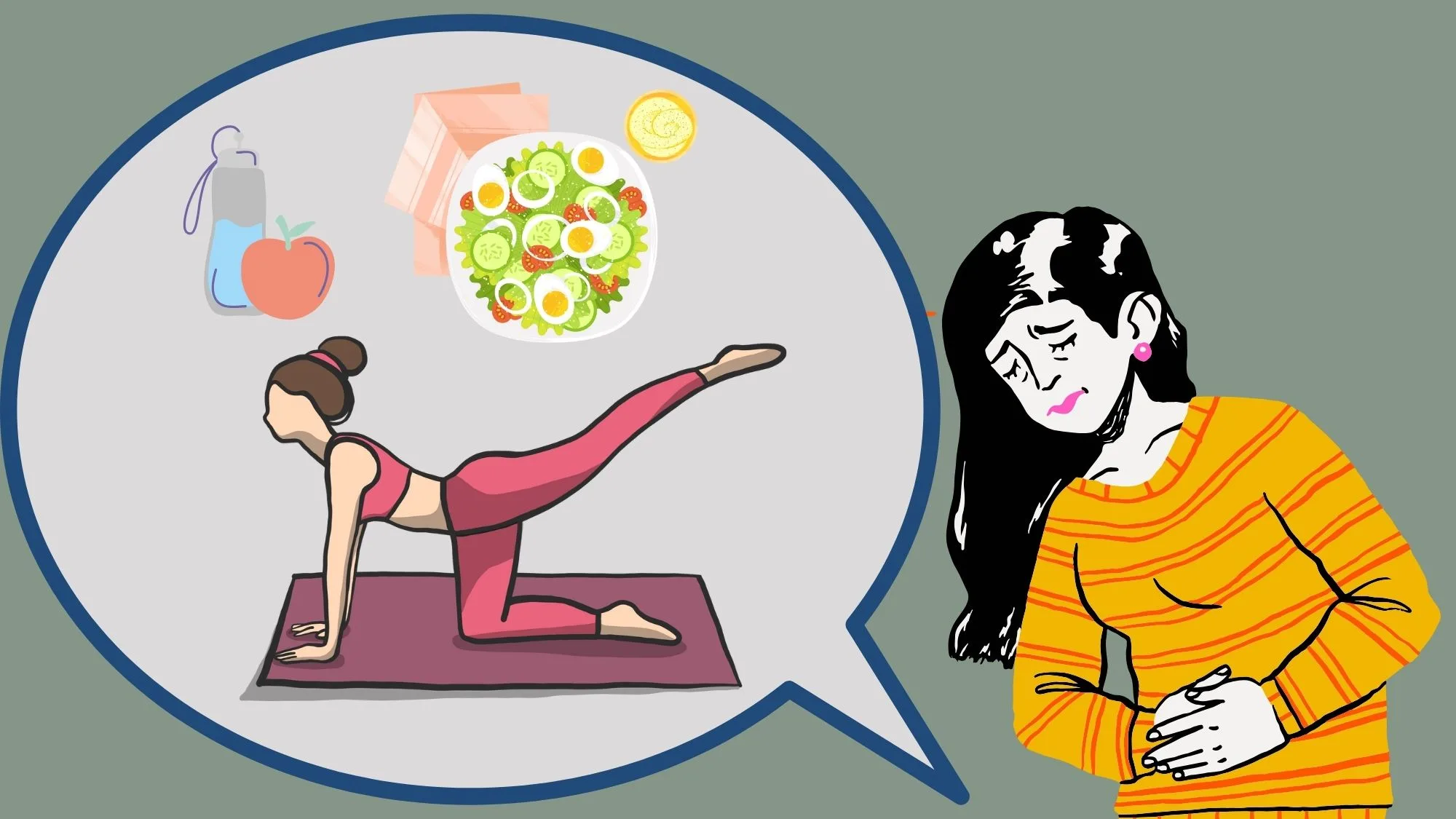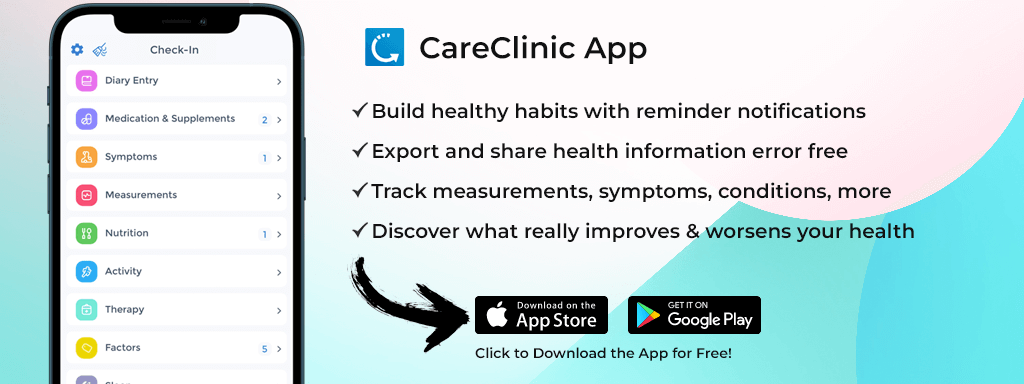
Endometriosis is a chronic condition that affects millions of women worldwide. If you have been diagnosed with endometriosis, it’s important to understand the impact it can have on your life and the lifestyle adjustments you can make to manage its symptoms effectively.[1][2][3][4]
Understanding Endometriosis
Endometriosis is a condition where the tissue that lines the uterus, known as the endometrium, grows outside the uterus. This abnormal growth can occur in the ovaries, fallopian tubes, and other pelvic organs. It can cause pain, inflammation, and the formation of scar tissue. It’s important to be aware of the common symptoms of endometriosis so that you can seek help and start managing the condition as early as possible.
What is Endometriosis?
Endometriosis is a chronic condition where the tissue that lines the uterus grows outside the uterus. This can cause pain, inflammation, and the formation of scar tissue in the pelvic area.
Common Symptoms of Endometriosis
Common symptoms of endometriosis include pelvic pain, pain during periods, pain during intercourse, heavy menstrual bleeding, and infertility. If you experience any of these symptoms, it’s important to consult a healthcare professional who can accurately diagnose and provide appropriate treatment options.
How Endometriosis Affects Your Life: Endometriosis Lifestyle Adjustments
Endometriosis can have a significant impact on various aspects of your life, including physical, mental, and emotional well-being. The chronic pain and discomfort associated with the condition can limit your ability to perform everyday activities and affect your quality of life. It’s essential to adopt lifestyle adjustments and self-care practices to manage the symptoms effectively.
Living with endometriosis can be challenging, as the symptoms can vary in severity and intensity from person to person. Some individuals may experience mild pain and discomfort, while others may have debilitating symptoms that interfere with their daily routines. It is crucial to remember that you are not alone in this journey, and there are support groups, online communities, and healthcare professionals who can provide guidance and understanding.
Endometriosis Effects on Mental Health
In addition to the physical symptoms, endometriosis can also take a toll on your mental and emotional well-being. Dealing with chronic pain and the uncertainty of the condition can lead to feelings of frustration, anxiety, and depression. It is essential to prioritize your mental health and seek support from therapists, counselors, or support groups who specialize in chronic pain and women’s health.
Managing endometriosis requires a multidisciplinary approach. Along with medical interventions, lifestyle adjustments can play a significant role in alleviating symptoms. Regular exercise, such as yoga or low-impact activities, can help reduce pain and inflammation. A balanced diet rich in fruits, vegetables, and whole grains can support overall health and may have a positive impact on endometriosis symptoms.
It’s important to remember that each person’s experience with endometriosis is unique, and what works for one individual may not work for another. Finding the right treatment plan may involve trial and error, and it’s crucial to have open and honest communication with your healthcare provider to explore different options and make informed decisions.
The Future of Endometriosis Treatment
Research and advancements in the field of endometriosis are ongoing, with scientists and medical professionals continuously working towards a better understanding of the condition. Participating in clinical trials or research studies can contribute to the development of new treatment options and improve the quality of life for individuals living with endometriosis.
Endometriosis is a complex condition that requires comprehensive care and support. By raising awareness, advocating for better healthcare, and sharing your experiences, you can contribute to a more informed and compassionate society. Together, we can work towards improving the lives of those affected by endometriosis and striving for a future with better treatment options and increased understanding.[5]
Endometriosis Lifestyle Adjustments
Endometriosis is a chronic condition that affects millions of women worldwide. While there is no cure for endometriosis, making certain lifestyle adjustments can help alleviate symptoms and improve your overall well-being. Here are some adjustments you can make:
Dietary Changes to Manage Endometriosis
Adopting a healthy, balanced diet can play a crucial role in managing endometriosis symptoms. Incorporate foods rich in omega-3 fatty acids, such as fatty fish, flaxseeds, and walnuts. These foods have anti-inflammatory properties that can help reduce inflammation in the body, which is often associated with endometriosis. Additionally, consuming a variety of fruits, vegetables, and whole grains can provide essential vitamins and minerals to support overall health and strengthen your immune system. Avoiding processed foods, caffeine, and alcohol may also help reduce symptoms and promote hormonal balance.
Furthermore, some studies suggest that certain dietary modifications, such as following a low-inflammatory diet or eliminating gluten and dairy, may help alleviate endometriosis symptoms for some individuals. However, it is important to consult with a healthcare professional or a registered dietitian before making any drastic dietary changes to ensure you are meeting your nutritional needs.
The Role of Exercise in Managing Endometriosis
Regular exercise can play a significant role in managing endometriosis symptoms. Engaging in physical activity helps reduce inflammation, improve blood circulation, and release endorphins, which are natural pain relievers. Low-impact exercises, such as walking, swimming, or yoga, can be particularly beneficial for individuals with endometriosis as they help strengthen your pelvic floor muscles and improve flexibility.
Additionally, incorporating exercises that focus on core strength, such as Pilates or gentle abdominal exercises, can help support your pelvic region and alleviate some of the discomfort associated with endometriosis. However, it is important to listen to your body and avoid overexertion or activities that worsen your symptoms. If you experience severe pain during exercise, it is advisable to consult with a healthcare professional to determine the best exercise plan for your specific needs.
Importance of Rest and Stress Management
Living with endometriosis can be physically and emotionally challenging. Chronic pain and stress often go hand in hand, exacerbating the symptoms of endometriosis. Therefore, it is crucial to prioritize rest and stress management techniques to help manage your condition effectively.
Ensuring you get enough quality sleep is essential for your overall well-being. Establishing a regular sleep routine, creating a comfortable sleep environment, and practicing relaxation techniques before bed, such as deep breathing or meditation, can help improve the quality of your sleep. Adequate rest allows your body to heal and rejuvenate, reducing pain and inflammation associated with endometriosis.
In addition to rest, incorporating stress management techniques into your daily routine can have a positive impact on your overall well-being. Practices such as deep breathing exercises, meditation, mindfulness, or engaging in activities you enjoy can help reduce stress levels and promote a sense of calmness and balance. It may also be beneficial to explore therapy or counseling options to address any emotional or psychological challenges that may arise from living with endometriosis.
Remember, managing endometriosis requires a holistic approach that considers various aspects of your life. By making these lifestyle adjustments, you can take an active role in managing your symptoms and improving your quality of life. However, it is important to consult with a healthcare professional to develop a personalized treatment plan that suits your specific needs.
Medical Treatments and Therapies: Endometriosis Lifestyle Adjustments
While lifestyle adjustments can be beneficial in managing endometriosis symptoms, it’s important to consult a healthcare professional to develop a comprehensive treatment plan. Depending on the severity of your symptoms and individual needs, medical treatments and therapies may be recommended.
Endometriosis is a chronic condition that affects millions of women worldwide. It occurs when the tissue that lines the uterus, known as the endometrium, grows outside of the uterus. This abnormal growth can cause pain, inflammation, and fertility issues. Fortunately, there are various medical treatments and therapies available to help manage these symptoms.
Hormonal Treatments for Endometriosis
Hormonal treatments, such as birth control pills, hormonal patches, or hormonal intrauterine devices (IUDs), can help regulate your menstrual cycle and reduce the growth of endometrial tissue. These treatments work by suppressing the production of estrogen, which is responsible for stimulating the growth of endometrial tissue. By reducing estrogen levels, hormonal treatments can help alleviate pain and menstrual symptoms associated with endometriosis.
It’s important to note that hormonal treatments may not be suitable for everyone. Your healthcare professional will consider factors such as your age, overall health, and desire for future fertility when recommending the most appropriate treatment option.
Pain Management Strategies
If you experience severe pain, your healthcare professional may recommend pain management strategies. Over-the-counter nonsteroidal anti-inflammatory drugs (NSAIDs), such as ibuprofen or naproxen, can help reduce inflammation and alleviate pain. These medications work by inhibiting the production of prostaglandins, which are responsible for causing pain and inflammation.
In addition to NSAIDs, your healthcare professional may suggest other pain management techniques, such as heat therapy or physical therapy. Heat therapy, in the form of hot water bottles or heating pads, can help relax the pelvic muscles and provide temporary relief from pain. Physical therapy, on the other hand, focuses on strengthening the pelvic floor muscles and improving overall pelvic health.
Surgical Options for Endometriosis
If your endometriosis symptoms are severe and impacting your daily life, your healthcare professional may recommend surgical intervention. Laparoscopic surgery is often performed to remove endometrial lesions and scar tissue. This minimally invasive procedure involves making small incisions in the abdomen and using a thin, flexible tube with a camera (laparoscope) to visualize and remove the abnormal tissue.
Laparoscopic surgery can provide significant relief from pain and improve fertility in some cases. However, it’s important to note that surgery is not a cure for endometriosis. The condition can still recur after surgery, and additional treatments may be necessary to manage symptoms in the long term.
In conclusion, medical treatments and therapies play a crucial role in managing endometriosis symptoms. Whether it’s hormonal treatments, pain management strategies, or surgical options, working closely with a healthcare professional can help you find the most effective treatment plan for your individual needs. Remember, every woman’s experience with endometriosis is unique, and it may take time to find the right combination of treatments that work best for you.[6]
Mental Health and Endometriosis
Living with endometriosis can take a toll on your mental and emotional well-being. It’s essential to prioritize your mental health and seek support when needed.
Endometriosis is a chronic condition that affects millions of women worldwide. It occurs when the tissue that lines the uterus grows outside of the uterus, causing pain, inflammation, and other symptoms. While the physical impact of endometriosis is well-known, the emotional toll it can take is often overlooked.
Coping with the Emotional Impact of Endometriosis
Dealing with a chronic condition like endometriosis can be emotionally challenging. It’s normal to experience feelings of frustration, sadness, or anxiety. The constant pain and uncertainty about the future can be overwhelming. It’s important to acknowledge and validate these emotions.
Talking to a therapist or counselor can help you navigate these emotions and develop coping strategies. A mental health professional can provide a safe space for you to express your feelings and offer guidance on managing stress and anxiety. They can also help you develop healthy coping mechanisms, such as relaxation techniques or mindfulness exercises.
Additionally, connecting with support groups comprising individuals who have similar experiences can provide comfort and understanding. Sharing your journey with others who understand the challenges of living with endometriosis can be incredibly empowering. Support groups can offer a sense of community, where you can exchange advice, share resources, and find solace in knowing that you are not alone.
Seeking Support: Therapy and Support Groups
Therapy and support groups can play a vital role in managing endometriosis and promoting overall well-being. Therapy sessions can provide a safe space to discuss your feelings, learn coping skills, and develop a positive mindset. A therapist can help you explore the emotional impact of endometriosis and work through any unresolved trauma or grief.
Support groups, on the other hand, can connect you with individuals who understand the challenges of living with endometriosis and offer valuable advice and support. These groups often meet regularly, either in person or online, allowing you to build relationships with others who share similar experiences. They can provide a platform for sharing stories, discussing treatment options, and finding encouragement during difficult times.
In addition to therapy and support groups, self-care practices are also crucial for managing your mental health while living with endometriosis. Engaging in activities that bring you joy, practicing relaxation techniques, and prioritizing rest and stress management can all contribute to your overall well-being.
Managing endometriosis involves a combination of lifestyle adjustments, medical treatments, and mental health support. By making dietary changes, engaging in regular exercise, prioritizing rest and stress management, and seeking appropriate medical care and emotional support, you can effectively manage the symptoms of endometriosis and improve your quality of life.
Use the CareClinic App to Manage Endometriosis Symptoms
As you navigate the complexities of managing endometriosis, the CareClinic App emerges as a valuable ally in your journey towards improved health outcomes. With its comprehensive symptom tracker, you can monitor your pain levels, menstrual cycle irregularities, and the effectiveness of various lifestyle adjustments and treatments. The app’s medication reminder feature ensures you stay on top of your hormonal treatments or pain management medications, while the integrated diary allows you to reflect on your mental and emotional well-being. By analyzing your data, the CareClinic App provides insights that can lead to more personalized and effective treatment plans in collaboration with your healthcare provider. Take control of your endometriosis management by installing the CareClinic App today and experience the empowerment of tracking your health journey at your fingertips.
References
- “5 tips for living with endometriosis | St. Luke’s Health | St. Luke's Health”. https://www.stlukeshealth.org/resources/5-tips-for-living-with-endometriosis
- “Endometriosis Diet: Foods to Eat and Avoid”. https://health.clevelandclinic.org/endometriosis-diet
- “Diet and Lifestyle Changes to Manage Endometriosis – Endometriosis Treatment Center NYC”. https://endometriosistreatmentcenternyc.com/diet-and-lifestyle-changes-to-manage-endometriosis/
- “Living with endometriosis | Jean Hailes”. https://www.jeanhailes.org.au/health-a-z/endometriosis/living-with-endometriosis
- “Endometriosis”. https://en.wikipedia.org/wiki/Endometriosis
- “Endometriosis”. https://healthlibrary.brighamandwomens.org/Wellness/Stress/85%2CP00573
- “The impact of endometriosis on depressive and anxiety symptoms and quality of life: a systematic review – PMC”. https://pmc.ncbi.nlm.nih.gov/articles/PMC10512020/
- “Coping with the Mental Health Challenges of Endometriosis | Nuvance Health”. https://www.nuvancehealth.org/health-tips-and-news/coping-with-mental-health-challenges-of-endometriosis
- “Mental Health, Well-Being, and Quality of Life: A Guide for People With Endometriosis and Those Who Support Them | The Endometriosis Network Canada”. https://endometriosisnetwork.com/endo-hub/mental-health-a-guide-for-people-with-endometriosis/
- “Endometriosis and Mental Health: Breaking the Silence”. https://www.elanzawellness.com/post/endometriosis-and-mental-health-breaking-the-silence


